Jeremie Averous's Blog, page 109
February 17, 2015
How to Negotiate Properly To Reach Agreement
In the book “Getting to Yes” by Roger Fisher and William Ury (veterans of international and corporate negotiations), the useful approach of Principled Negotiation is exposed. It is based on four powerful points:

Avoid this particular negotiation tactics!
People: Separate the people from the problem.
Interests: Focus on interests, not positions.
Options: Invent multiple options looking for mutual gains before deciding what to do.
Criteria: Insist that the result be based on some objective standard.
Of course proper and consistent implementation of these principles requires some practice. It also sometimes requires quite some work to get the other party to agree on this approach and play the game of that type of negotiation.
If I had to choose one of these points as the most important, the creative ability to come up with a number of options (and at the same time, to be sufficiently resilient from an emotional point of view to be able to assess the actual pros and cons of these options), would probably be my choice. Having as many options as possible a key asset in a negotiation. Be creative!
February 14, 2015
How to Become Quickly Better than the Best Experts
Also described by James Altucher as the ‘Tony Robbins Method‘:
 at first you don’t know anything.
at first you don’t know anything.you find 5 people who are the experts in the world.
you extensively interview them.
you figure out the most simple things they have in common with each other.
you do that simple thing over and over and over and over (repetition).
Actually that is a great recipe to be even better than an expert in much less time – because you will thus figure out something none of those best experts had figured out as a key finding in their field.
Ready to try?
Hat tip to James Altucher in his interview with Tony Robbins about his new book
February 12, 2015
How to Use Conflict to Shape an Engaging Presentation
Like good movies, great presentations need to be memorable. To be memorable, they need to tell a story that will stay with the audience and that can be talked about further.
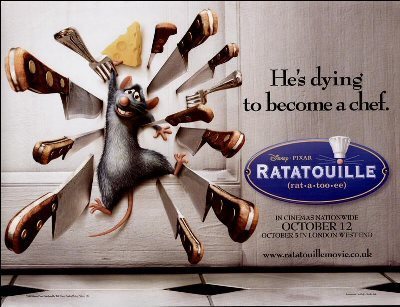
Ratatouille, an engaging story about a struggle to achieve a passion
“No conflict, no story. (…) Make things clear, engaging, and memorable by illustrating the struggle” recommends Garr Reynolds, a presentation guru, one of his posts ‘10 tips for improving your presentations & speeches‘. He continues: “We can certainly improve almost any talk by being mindful of what is at stake and what the obstacles are to overcome. Here’s a definition of Story from the book ‘Story Proof': “A character-based narration of a character’s struggles to overcome obstacles and reach an important goal.””
Showing struggle and vulnerability is a great way to connect with an audience and create engagement. Highlight the conflicts at stake, personal or organizational, and do not hesitate to be overly dramatic in the way you present. Your audience will stay with you and will remember what your message is.
Rework your presentation to highlight the conflict and the struggle.
And show the way.
February 10, 2015
How Collaborative Organizations Should Work
There is a great slideshow on ‘How Google Works’ by Eric Schmidt & al that is a good inspiration on how organizations will work in the Collaborative Age.
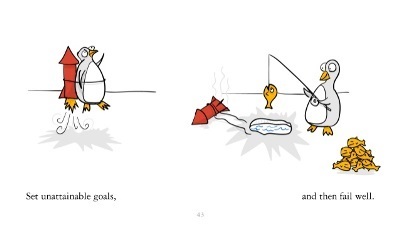 The key message of the presentation revolves about how to attract and foster great work from “Smart Creatives”. I like the concept in how it represents the key value creation of the Collaborative Age. Of course, the slideshow also revolved around such usual topics like failing often and well, and how to create the right company culture to get creative people to create and not to produce powerpoints and MBA type business plans.
The key message of the presentation revolves about how to attract and foster great work from “Smart Creatives”. I like the concept in how it represents the key value creation of the Collaborative Age. Of course, the slideshow also revolved around such usual topics like failing often and well, and how to create the right company culture to get creative people to create and not to produce powerpoints and MBA type business plans.
Enjoy the slideshow:
How Google Works from Eric Schmidt
February 7, 2015
Why Overcoming our Fear of Freedom is Key to Success in the Collaborative Age
Seth Godin states in his excellent post ‘the Fear of Freedom‘ that: “We live in an extraordinary moment, with countless degrees of freedom. The instant and effortless connection to a billion people changes everything, but instead, we’re paralyzed with fear, a fear so widespread that you might not even notice it. We have more choices, more options and more resources than any generation, ever”
 Our individual freedom has never been so great, never since the Agricultural Age have we had so many hours of leisure and never have we had so many resources at the touch of the fingers. It will only increase with the Fourth Revolution into the Collaborative Age. What do we do of this freedom? What do we do of that knowledge? What do we do of these possibilities?
Our individual freedom has never been so great, never since the Agricultural Age have we had so many hours of leisure and never have we had so many resources at the touch of the fingers. It will only increase with the Fourth Revolution into the Collaborative Age. What do we do of this freedom? What do we do of that knowledge? What do we do of these possibilities?
Most of us have not found the answer yet. Most of us are paralyzed and even dream to come back the 1950’s where life seemed much simpler and straightforward – albeit with much less possibilities than today for the average person.
The ability to overcome our fear of freedom is key to our success in the world that opens to us. Going beyond our habits, connecting beyond our circles, broadcasting on the web, reaching out to the world with our own voice. That is what will distinguish those that will succeed in the new world.
Do you fear freedom, uncertainty? Let’s practice freedom. It is possible to do it in small doses, and it is necessary.
When do you start practicing your freedom?
February 5, 2015
How to Accelerate Decision-Making in a Negotiation
One of the best proven methods to accelerate decision-making in a negotiation is to set up a deadline, which can be arbitrary if needed (or, an existing deadline which importance for the issue at hand is overly exaggerated). Actually, arbitrarily-set deadlines are an excellent way to accelerate decision-making, potentially in one’s favor if quick decision is required.
 Arbitrary deadlines can be a date in a calendar, but the most effective way is to link them with an event that is planned and looks difficult to move: a flight, an overseas trip, long-planned offline holidays. It can even be another deadline already given to an other party when it comes to compete for the same resources! (let’s extend the concept – we can already envisage a situation where deadlines can be created arbitrarily by informing a party of an imaginary deadline given to a second party which had set its deadline based on another arbitrary time like the birthday of the wife of the founder – imagination can be never-ending).
Arbitrary deadlines can be a date in a calendar, but the most effective way is to link them with an event that is planned and looks difficult to move: a flight, an overseas trip, long-planned offline holidays. It can even be another deadline already given to an other party when it comes to compete for the same resources! (let’s extend the concept – we can already envisage a situation where deadlines can be created arbitrarily by informing a party of an imaginary deadline given to a second party which had set its deadline based on another arbitrary time like the birthday of the wife of the founder – imagination can be never-ending).
Deadlines are also great not only for the other party but for ourselves because it gives a maximum time-frame where we can be bothered by this particular issue.
On major issues, decision points and negotiations, do not hesitate to set arbitrary deadlines. It will put the system in tension and will lead to much more effective positioning and decision-making.
February 3, 2015
How Important Decisions Really Get Taken in a Negotiation
“No matter how many people are involved in a negotiation, important decisions are typically made when no more than two people are in the room” say Fisher and Ury in the basic book on negotiation ‘Getting to Yes‘.
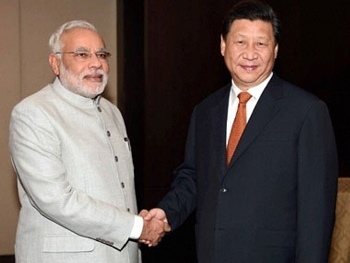
Important international negotiations always have to conclude locking together the relevant leaders
Preparation with a wide team is important, even essential in complicated subjects so as to make sure that the key decision points are properly identified and their real consequences properly assessed and understood by each party.
Still, when difficult, the final decision is always most efficiently determined in an eye-to-eye meeting between the two leaders.
It is important to recognize this mechanism and invest in the personal relationship beforehand at leader level so as to make this final moment of the negotiation easier. It also helps when it is part of a series of negotiations where both parties could appreciate if the other party was interested in building a long term relationship.
If you are the leader, don’t be afraid once the issues have been exposed and all the easy points agreed, to close yourself up with the leader of the other party to take the final decisions. It might take some guts to support whatever final position you will take together, but it is the only way to be effective and reach a decision.
Two people face to face. It is how all successful tough negotiations end up. Don’t be scared. Go for it!
January 31, 2015
Why Would We Admire People More for Trying than for their Successes?
That’s Pixar storytelling rule #1: “You admire a character for trying more than for their successes“. Hence Pixar characters spend the entire movie trying (though they often succeed at the end). Why does it elicit such admiration?
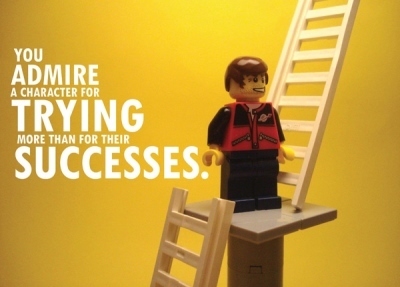 I think that comes from the fact that we are all trying, and we know it is hard. Thus when we see others trying and eventually succeeding we know that they have had to overcome many self-imposed barriers and many other obstacles created by their environment. If characters were to succeed too easily, we would of course just take it for granted – and we would know that it is not how life really is like. We also tend to connect more easily with a person that is visibly struggling to achieve hard stuff – like us.
I think that comes from the fact that we are all trying, and we know it is hard. Thus when we see others trying and eventually succeeding we know that they have had to overcome many self-imposed barriers and many other obstacles created by their environment. If characters were to succeed too easily, we would of course just take it for granted – and we would know that it is not how life really is like. We also tend to connect more easily with a person that is visibly struggling to achieve hard stuff – like us.
In our life, showing that we are struggling (and the associated vulnerability) is difficult but is probably rewarding, as many examples abound of people who have decided to share how they feel inadequate and still succeed (for more on this, refer to the books and the TED presentation (one of the top 5 most watched ever) of Brene Brown).
Personally, like many of us, I tend to try to hide my difficulties, my struggles. I tend to believe it does not fit social and professional life, as we always strive to look perfect and with everything going well. Maybe it would be worth showing a bit more how imperfect I feel sometimes – avoiding whining of course? Food for thought for the new year. You might hear more about my struggles!
HT to bitrebels.com for the illustration.
January 29, 2015
Why We Should Practice Silence as a Powerful Transformation Tool
Silence has got great power, sometimes greater than words. “Sometimes defined a deafening void, silence is an art. It comes with its own grammar: forging words that go with any sound or message is no trivial thing. Silence is a dynamic and ever changing force.” – writes Valeria Maltoni in an excellent post on this subject.
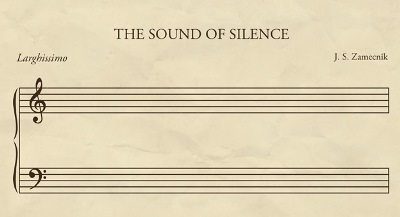 We struggle to use the power of silence; on the contrary we tend to try to fill all our waking moments with noise and content. We try to fill our conversation with words. We feel uneasy with silence. It is as though we fear silence.
We struggle to use the power of silence; on the contrary we tend to try to fill all our waking moments with noise and content. We try to fill our conversation with words. We feel uneasy with silence. It is as though we fear silence.
Yet in my experience, it is in the silent moments that shifts and transformation happen. It is in the silent moments that reflection comes to fruition. It is in the silent moments that I reflect on what has happened and that I find a sense to my actions and to my life. It is in common silent moments that my relationships with people deepens, and mutual understanding and empathy spread.
It is those silent moments we fear where we shift our understanding and relationships. Those we flee from. But we should, on the contrary, be grateful for them.
We must practice silence and pause. Not that we should transform our days into silent days. But we must know how to entertain the right moments of silence, those that are powerful to transform lives.
Try to practice the power of silence. It will transform your life.
January 27, 2015
How the Rate of Evolution Increases Dramatically Right Now
We have mentioned several times in our book and posts how information generation is evolving exponentially. Another statistics: “According to a calculation Hal Varian, an economist at Google, and I made, total worldwide information has been increasing at the rate of 66 percent per year for many decades.” – says Kevin Kelly in ‘What Technology Wants‘. Refer to the the exponential deception to really understand what that means!
 “Compare that explosion to the rate of increase in even the most prevalent manufactured stuff —such as concrete or paper— which averages only 7 percent annually over decades” Kevin Kelly continues.
“Compare that explosion to the rate of increase in even the most prevalent manufactured stuff —such as concrete or paper— which averages only 7 percent annually over decades” Kevin Kelly continues.
But the most astonishing is not that. The most astonishing is that we seem to evolve much quicker as well: “Today, according to research on the mutations in our DNA, our genes are evolving 100 times faster than in preagricultural times“. Evolution is also quicker!
We are part of the system that evolves, and our evolution pace also quickens – although not as quickly as the world around us.



